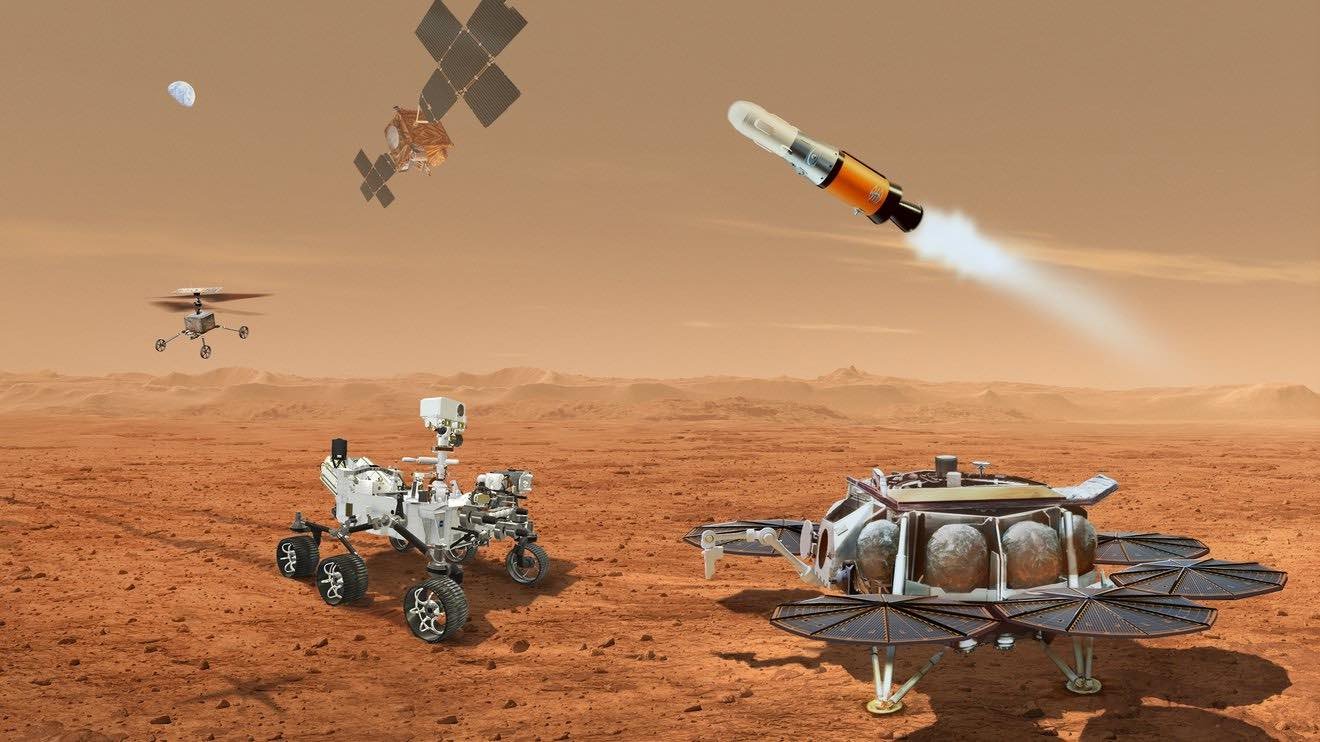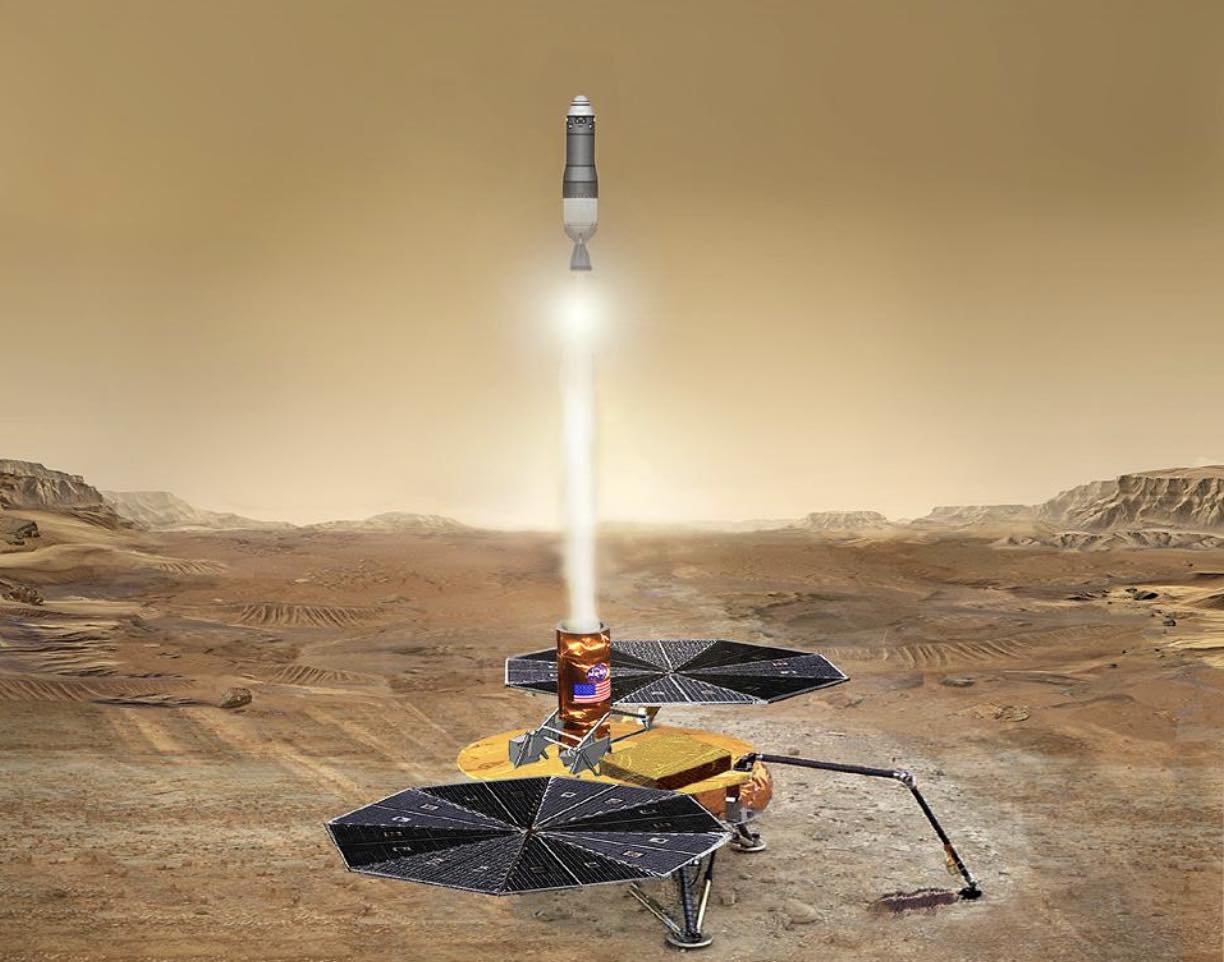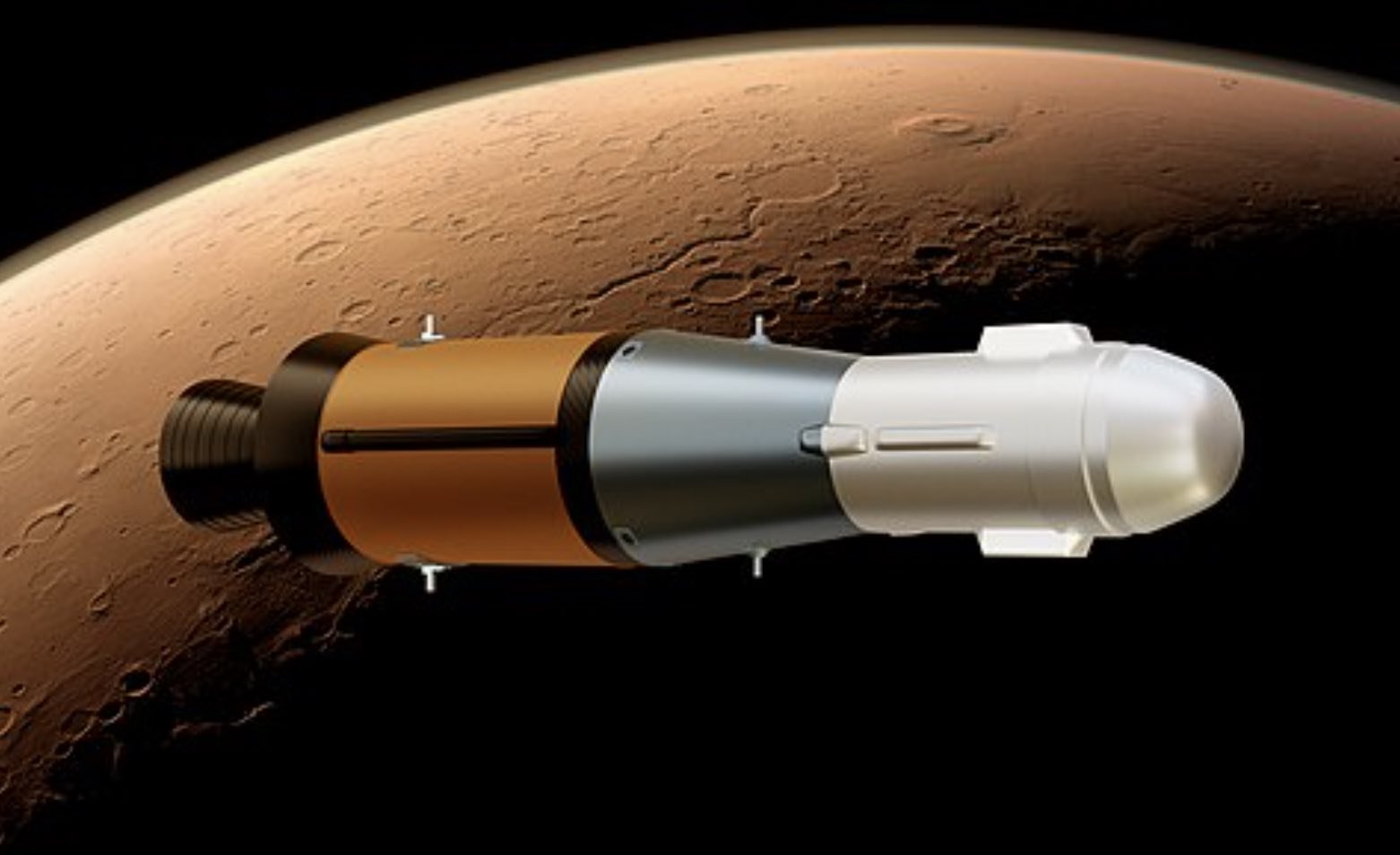

Welcome to this week’s installment of The Intelligence Brief… as NASA has outlined its latest plans for its ambitious Mars Sample Return Program, now expected to deliver samples collected by the Perseverance rover back to Earth by 2033, we’ll be 1) getting a status update on the mission’s current efforts, 2) looking at what the current plans for the mission entail, and finally, 3) taking a look at future launch dates that NASA has outlined in recent days.
Quote of the Week
“By exploring and understanding Mars, we may gain key insights into the past and future of our own world.”
– Buzz Aldrin
Before getting into the thick of things, a few of the stories we’ve been covering at The Debrief in recent days includes a feud… one between NASA and the Chinese Space Agency, which involves speculations about a “takeover” of the Moon, of all things. Elswhere, I recently offered some ideas about a more promising development related to China’s Moon explorations, which might even help unravel new clues about the longstanding “Aristarchus anomaly” that has baffled Astronomers for centuries. Meanwhile, have a look at this magnetic material that seems to freeze and become stronger at warmer temperatures… we delve into why physicists now believe they understand how that happens.
Also, be sure to check out all the latest videos from The Debrief on our official YouTube channel, where you’ll find recent episodes of Rebelliously Curious with our own Chrissy Newton, and much more. And as always, you’ll find a complete roundup of all our latest articles at the conclusion of this newsletter.
And with all that behind us, it’s time we take a look at why NASA is so excited about the forthcoming Mars Sample Return Program, and what the successful delivery of samples from Mars will mean for us now, and for future generations of scientists.
Status Update: The Latest on NASA’s Mars Sample Return Program
In 2033, Earth will receive the first successfully delivered samples from another planet, currently being collected on Mars by NASA’s Perseverance rover, according to statements this week from NASA and the European Space Agency (ESA).
“NASA has finished the system requirements review for its Mars Sample Return Program,” read a statement on the website of NASA’s Jet Propulsion Laboratory (JPL), which stated that the ambitious effort to return Martian samples back to Earth is drawing near to completion of its conceptual design phase, signaling a clearer timeline than ever before that NASA plans to fulfill the historic achievement.
The American space agency added that as the current phase of conceptual design is completed, it is ironing out the finer details of how the samples, currently being collected by Perseverance from the Jezero Crater, will be returned to Earth.


Thomas Zurbuchen, the associate administrator for science at NASA Headquarters, said that the current conceptual design phase “is when every facet of a mission plan gets put under a microscope,” adding that there “are some significant and advantageous changes to the plan, which can be directly attributed to Perseverance’s recent successes at Jezero and the amazing performance of our Mars helicopter.”
“Working together on historic endeavors like Mars Sample Return not only provides invaluable data about our place in the universe,” Zurbuchen added, “but brings us closer together right here on Earth.”
Anatomy of NASA’s Mars Sample Return Program
The current mission architecture has been formulated around a variety of different factors. Among these, NASA technicians had to account for the current longevity of the Perseverance rover, one of its most ambitious long-term projects.
Roughly the size of a small vehicle, Perseverance was designed especially for the task of landing and probing the Jezero crater for potential signs of life—past or present—and other scientific objectives as part of NASA’s Mars 2020 mission. Since its successful landing on the Red Planet, the rover has remained in operation now for more than a year as its scientific efforts continue.
In the future, part of Perseverance’s mission will also include transportation of the samples it is currently collecting to the next component of NASA’s sample return mission: its Sample Retrieval Lander, which will house the Mars Ascent Vehicle, along with its accompanying Sample Transfer Arm provided by NASA’s ESA partners.


There have, however, been a few changes along the way as the mission has progressed. According to a statement at NASA’s JPL website, “the Mars Sample Return campaign will no longer include the Sample Fetch Rover,” also noting that the aforementioned system’s second lander has similarly been excluded from NASA’s current plans.
However, now joining the lineup of equipment that will help to facilitate the sample retrieval mission are a pair of new helicopters, which will join Ingenuity, the small coaxial rotor helicopter that is currently operating on.
“The Sample Retrieval Lander will include two sample recovery helicopters,” the JPL mission update read, each of which will build upon the basic design of Ingenuity. “The helicopters will provide a secondary capability to retrieve samples cached on the surface of Mars,” the JPL statement read.
Launch Dates on the Horizon
Right now, NASA says that launch dates for its Earth Return Orbiter will occur in 2027, while the following summer, its Sample Retrieval Lander will lift off in mid-2028. Barring any unforeseen challenges, the mission should successfully deliver the samples collected by Perseverance by 2033.
“With its architecture solidified during this conceptual design phase, the program is expected to move into its preliminary design phase this October,” NASA said in a statement, adding that the space agency expects this phase to last approximately one year while the program completes all required technological and engineering developments, along with the delivery of prototypes and major components that will be integral to the mission.
The ESA has expressed similar confidence in the mission’s current pace, noting that NASA’s European partners are “continuing at full speed the development of both the Earth Return Orbiter that will make the historic round-trip from Earth to Mars and back again; and the Sample Transfer Arm that will robotically place the sample tubes aboard the Orbiting Sample Container before its launch from the surface of the Red Planet,” said David Parker, ESA director of Human and Robotic Exploration.”


NASA has stated that in 2023, it will hold meetings with its ESA partners to reach formal agreements about each agency’s continued cooperation in the retrieval endeavor.
As far as the next steps toward achieving mission success, the Perseverance rover has currently already collected eleven samples, mostly consisting of rock core specimens, but one atmospheric sample is also contained within its current collection.
“This strategic NASA and ESA partnership will fulfill a solar system exploration goal,” a NASA statement read, calling the historic Mars Sample Return Program “a high priority since the 1970s and in the last three National Academy of Sciences Planetary Science Decadal Surveys.”
The successful delivery of samples from Mars back to Earth will represent an unprecedented opportunity for the international scientific community to study samples from one of Earth’s planetary neighbors with advanced equipment that would be impossible to send to Mars for field analysis. Further, the retrieval of such samples will facilitate the potential for their future study extending into the next several decades, by which time even more ambitious efforts may bring to fruition the acquisition of similar samples, perhaps even from worlds more distant than Mars.
That wraps up this week’s installment of The Intelligence Brief. You can read past editions of The Intelligence Brief at our website, or if you found this installment online, don’t forget to subscribe and get future email editions from us here. Also, if you have a tip or other information you’d like to send along directly to me, you can email me at micah [@] thedebrief [dot] org, or Tweet at me @MicahHanks.


Here are the top stories we’re covering right now…
- Evidence of an Ancient Sea Monster Just Turned Up in an Unlikely Place, but it Wasn’t Loch Ness
New fossil evidence is changing what we thought we knew about plesiosaurs… and here’s why it has some people talking about Loch Ness.
- DeepMind Researchers Say Their AI Can Learn Physics With Help From Optical Illusions
Researchers with DeepMind have succeeded in teaching an AI system fundamental ideas in physics using videos of optical illusions.
- The Bright Side of the Moon
Interstellar travel would require major investments. Instead, first we should examine the objects that arrive in our solar system from interstellar space.
- Life Not As We Know It: Probing the Nature of Dark Matter
If any civilizations out there use dark matter or dark energy to fuel their spacecraft, they may be harder to detect than we might assume.
- Feud Between NASA and China Reveals the Difficulties of a Moon Takeover
Recently, speculation has been rife that either China or the U.S. may have aspirations to attempt a moon take-over.
- The Aristarchus Anomaly: What China Found on the Moon Could Help Solve a Centuries-Old Mystery
Astronomers have long reported sightings of mysterious flashes of light from within the Aristarchus crater, and new data could help scientists understand their source.
- This Magnetic Material Seems to Bend the Laws of Physics by Freezing at Hotter Temperatures
A magnetic material seems to freeze and become stronger at warmer temperatures. Physicists believe they may understand why.
- Artemis-I: NASA Has Its Eyes on the Moon as it Preps For Future Mars Missions
NASA’s Artemis-I mission has set a trio of possible dates for the space agency’s first official launch to the Moon in 50 years.
- Hearing Noises During your Dreams Might be Normal, According to New Research
New research suggests that hearing noises while we dream could be far more common than scientists once expected.
- The Pentagon Just Revealed the New Name of Its UAP Investigative Office
The DoD says the All-domain Anomaly Resolution Office (AARO), the newest iteration of its UAP investigations, will continue the efforts of the UAP Task Force.
- Mysterious “String” Spotted by Mars Rover Suddenly Disappears
A piece of string-like material photographed on Mars by the Perseverance Rover just last week has suddenly disappeared.
- Climate Change Concerns Prompt Executive Action From the White House
This week we turn our focus toward the Biden Administration’s recent executive steps toward curbing the effects of climate change.
- The U.S. Air Force is Gearing Up For Action With Its New Fighter-Mounted Lasers
After years of testing and development, the United States Air Force has received its first delivery of fully functional, fighter-mounted lasers.
- Upcoming Psyche Mission Could Help Determine if Asteroid is Actually a Protoplanet
NASA’s Psyche mission scheduled for later this year may be able to determine whether a curious asteroid is in fact a protoplanet.